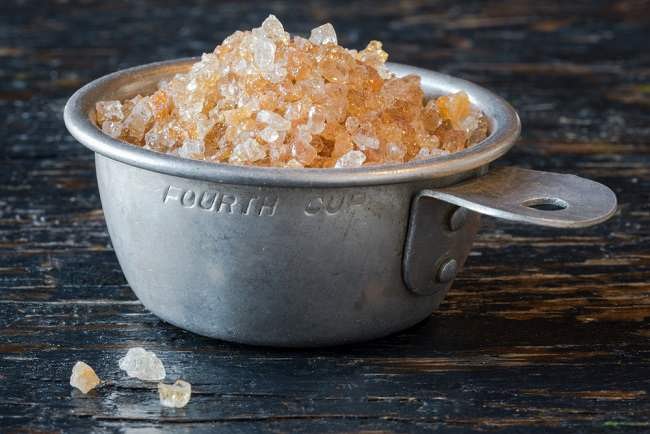Poisonous plants often grow among other plants and have a shape similar to that of ordinary plants. If accidentally touched, inhaled, or ingested, poisonous plants can pose a health hazard, even life threatening.
Many plants are safe for consumption as daily food and are beneficial for health. Some plants can even be used as herbal medicines to prevent and treat various diseases.

However, there are also several types of plants that can actually harm health and are toxic to the human body, including:
- Poison ivy or nettle
- Poison oak
- Amethyst
- Tobacco
- Yellow trumpet flower
- oleander flower
- Gympie-gympie
- Castor seeds
In addition to the types of plants above, there are many other plants that are thought to have harmful toxins for humans. Therefore, you should not carelessly consume certain plants that have not been proven to be safe or beneficial.
Chemical Substances in Toxic Plants and Their Impact bfor the body
There are many chemicals in plants that are the reason why they are called poisonous. Some of these poisons are alkaloids, glycosides, arsenic, and urushiol.
These substances are produced by several types of poisonous plants as a form of self-defense from animal attacks that can interfere with their growth. If consumed by humans, these toxic substances can cause a number of dangerous health problems.
The following are health problems that can result from exposure to poisonous plants:
Allergic reaction
People who are exposed to the substance urushiol in the poisonous plant of nettle, will usually experience an allergic reaction. These reactions occur due to touching plant parts or objects that have been contaminated with poison, pricked by thorns or plant stems, and inhaling pollen from flowers or smoke from burning these plants.
Exposure to toxic substances on the skin can cause skin itching, redness, blisters, and swelling. This allergic reaction is also known as Toxicodendron dermatitis, which is a type of contact dermatitis due to exposure to plant chemicals of the genus Toxicodendron.
When in contact with the eyes, these chemicals can cause eye irritation and even blindness. If inhaled, it can cause rhinitis and shortness of breath. In severe cases, exposure to this poisonous plant can also lead to potentially life-threatening anaphylactic shock.
Poisoning
Symptoms of poisoning that can appear due to exposure to poisonous plants can vary, depending on the type of poison contained in the plant. Here is the explanation:
1. Alkaloid poisoning
If ingested or ingested, poisonous plants containing alkaloids can cause conditions or symptoms similar to food poisoning.
Symptoms may include severe diarrhea, nausea, vomiting, stomach cramps, headache, fainting, hallucinations, and delirium. In severe cases, alkaloid poisoning can even lead to death.
2. Glycoside poisoning
Meanwhile, glycosides in poisonous plants can cause a number of serious problems, such as seizures, hypoxia, stroke, kidney disorders, problems with the heart muscle, and even cause death. One type of poison that is included in this type of poison is cyanide.
3. Arsenic poisoning
A person can experience arsenic poisoning if he eats poisonous plants or plants contaminated by toxic waste containing arsenic.
Symptoms of arsenic poisoning can include muscle pain, stomach pain, dizziness, weakness, vomiting, shortness of breath, to chest palpitations.
How to Overcome the Harmful Effects of Toxic Plants
How to deal with the effects of exposure to toxic plants depends on the complaints that arise. If the type of poison is known and an antidote or antidote is available, the antidote should be given as soon as possible.
In general, when someone experiences complaints due to exposure to poisonous plants, the first aid that can be done is:
- Immediately clean the body area affected by poisonous plants with warm water and soap for 20-30 minutes. In case of contact with eyes, rinse immediately with clean water.
- Wash all clothing and items that may be contaminated.
- Give a cold compress on the skin that feels itchy or rashes and blisters appear due to exposure to poisonous plants. To relieve allergy symptoms on the skin, also try using a lotion calamine or take anti-allergic drugs (antihistamines).
- For more severe allergic reactions, you can use corticosteroid drugs prescribed by a doctor.
- Avoid scratching the exposed skin area because it can cause sores on the skin that are at risk of becoming infected with bacteria.
Usually, mild to moderate complaints due to exposure to poisonous plants only last for 1-3 weeks. If the symptoms do not go away or get worse, you need to see a doctor.
However, if after consuming or being exposed to poisonous plants you feel severe symptoms, such as shortness of breath, difficulty swallowing, swollen face, severe diarrhea, nausea and vomiting blood, to weakness, immediately seek help from the emergency room at the nearest hospital.









